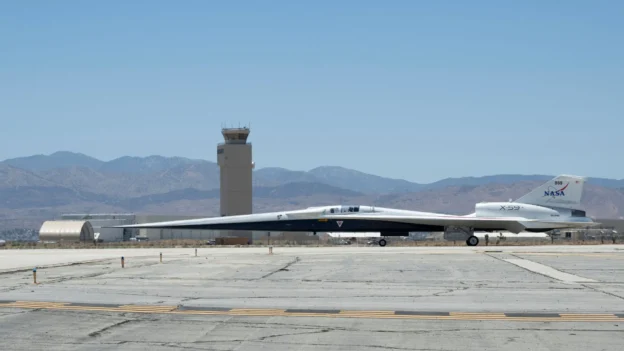The X-59 supersonic aircraftdeveloped by NASA as part of its Quesst (Quiet SuperSonic Technology) mission, successfully completed its first low-speed taxi test at U.S. Air Force Plant 42, located in Palmdale, California. This step marks an important advance towards its first scheduled flight.
During the test, conducted on July 10, the X-59 taxied down the runway under its own power, allowing engineers and flight crews to check essential systems such as steering, braking and taxi control. These tests are critical to validate the vehicle’s basic functionality prior to its inaugural takeoff.
The test was conducted at U.S. Air Force Plant 42. Source: NASA Armstrong Flight Research Center
NASA X-59 design and features
The X-59 has been designed with an elongated structure and a cabin without a traditional windshield, which allows minimizing the sonic boom to a slight sonic boom. NASA’s goal with this aircraft is to demonstrate that supersonic flight can be supersonic flight flight is feasible over populated areas, opening the door to future high-speed commercial flight.
The U.S. space agency is developing this project in collaboration with Lockheed Martin, through its Skunk Works facility. The taxiing phase is one of the last ground evaluation stages before the X-59 finally takes to the skies.
After completing this series of verifications, the X-59 is expected to make its first flight in the next few months, becoming the first experimental aircraft to attempt to change public and regulatory perceptions about supersonic flight over land.
Follow us on social networks and don’t miss any of our publications!
YouTube LinkedIn Facebook Instagram X (Twitter) TikTok
Source: NASA
Photo: NASA/Carla Thomas

